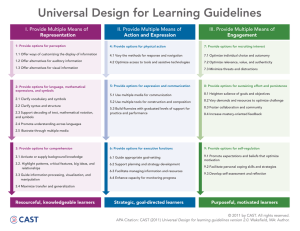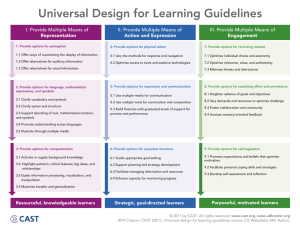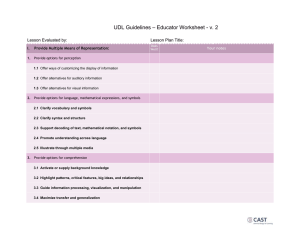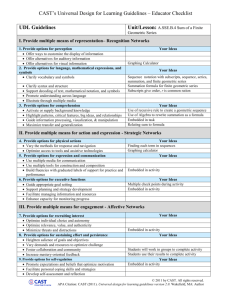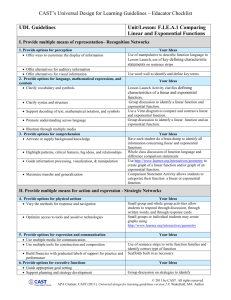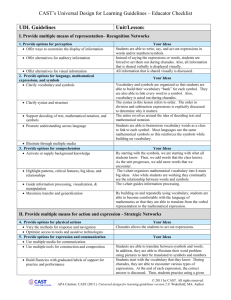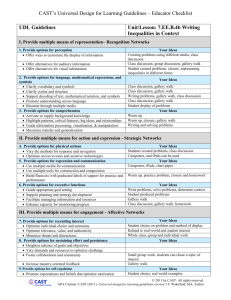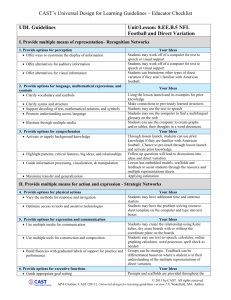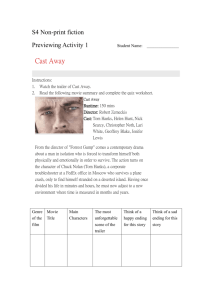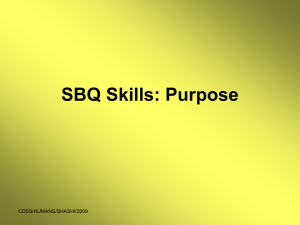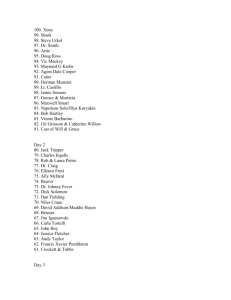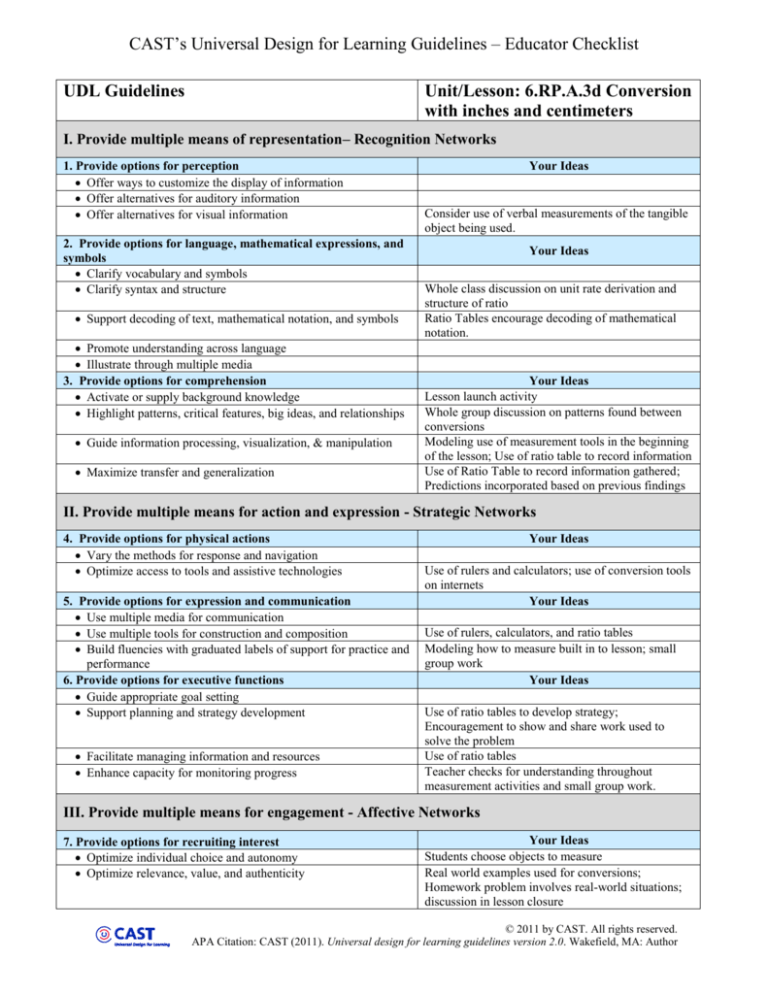
CAST’s Universal Design for Learning Guidelines – Educator Checklist
UDL Guidelines
Unit/Lesson: 6.RP.A.3d Conversion
with inches and centimeters
I. Provide multiple means of representation– Recognition Networks
1. Provide options for perception
Offer ways to customize the display of information
Offer alternatives for auditory information
Offer alternatives for visual information
2. Provide options for language, mathematical expressions, and
symbols
Clarify vocabulary and symbols
Clarify syntax and structure
Support decoding of text, mathematical notation, and symbols
Promote understanding across language
Illustrate through multiple media
3. Provide options for comprehension
Activate or supply background knowledge
Highlight patterns, critical features, big ideas, and relationships
Guide information processing, visualization, & manipulation
Maximize transfer and generalization
Your Ideas
Consider use of verbal measurements of the tangible
object being used.
Your Ideas
Whole class discussion on unit rate derivation and
structure of ratio
Ratio Tables encourage decoding of mathematical
notation.
Your Ideas
Lesson launch activity
Whole group discussion on patterns found between
conversions
Modeling use of measurement tools in the beginning
of the lesson; Use of ratio table to record information
Use of Ratio Table to record information gathered;
Predictions incorporated based on previous findings
II. Provide multiple means for action and expression - Strategic Networks
4. Provide options for physical actions
Vary the methods for response and navigation
Optimize access to tools and assistive technologies
5. Provide options for expression and communication
Use multiple media for communication
Use multiple tools for construction and composition
Build fluencies with graduated labels of support for practice and
performance
6. Provide options for executive functions
Guide appropriate goal setting
Support planning and strategy development
Facilitate managing information and resources
Enhance capacity for monitoring progress
Your Ideas
Use of rulers and calculators; use of conversion tools
on internets
Your Ideas
Use of rulers, calculators, and ratio tables
Modeling how to measure built in to lesson; small
group work
Your Ideas
Use of ratio tables to develop strategy;
Encouragement to show and share work used to
solve the problem
Use of ratio tables
Teacher checks for understanding throughout
measurement activities and small group work.
III. Provide multiple means for engagement - Affective Networks
7. Provide options for recruiting interest
Optimize individual choice and autonomy
Optimize relevance, value, and authenticity
Your Ideas
Students choose objects to measure
Real world examples used for conversions;
Homework problem involves real-world situations;
discussion in lesson closure
© 2011 by CAST. All rights reserved.
APA Citation: CAST (2011). Universal design for learning guidelines version 2.0. Wakefield, MA: Author
CAST’s Universal Design for Learning Guidelines – Educator Checklist
Minimize threats and distractions
8. Provide options for sustaining effort and persistence
Heighten salience of goals and objectives
Vary demands and resources to optimize challenge
Foster collaboration and community
Your Ideas
Discussion of use of estimation and reasonableness
when working on conversion problems
Varying levels of difficulty in questions posed
Small group work and whole group discussion
throughout lesson
Increase mastery-oriented feedback
9. Provide options for self-regulation
Promote expectations and beliefs that optimize motivation
Facilitate personal coping skills and strategies
Develop self-assessment and reflection
Your Ideas
Frequent check in points after each activity
Use reminders of estimation to assess one’s
solutions.
© 2011 by CAST. All rights reserved.
APA Citation: CAST (2011). Universal design for learning guidelines version 2.0. Wakefield, MA: Author


